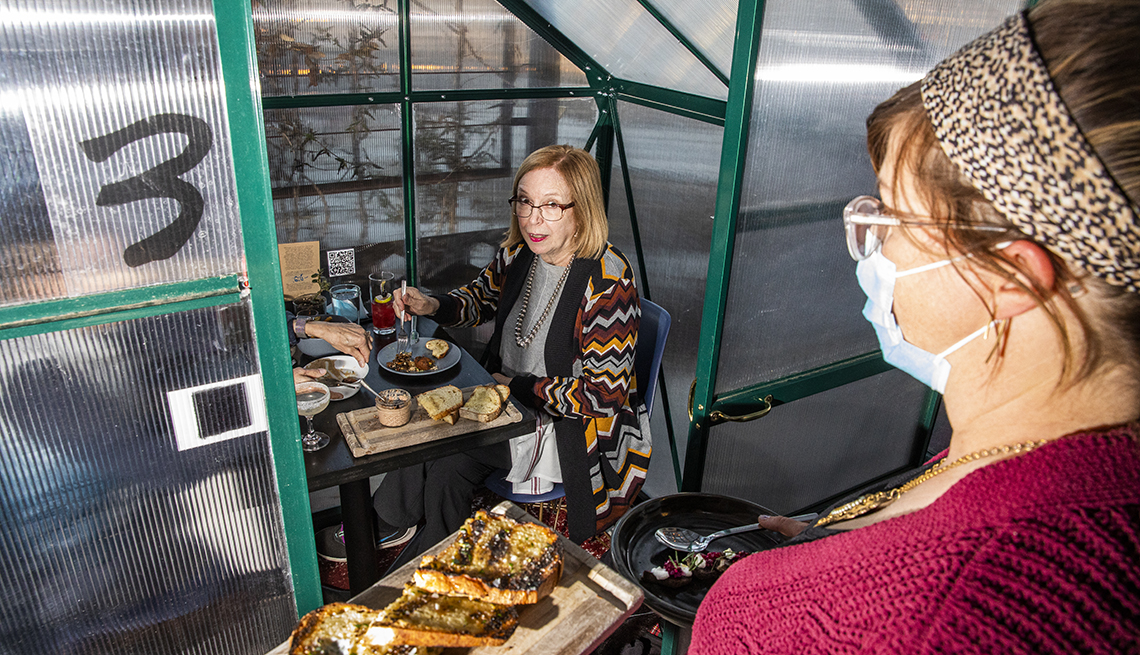
8 items to look for when dining out during the pandemic
- Select a language for the TTS:
- UK English Female
- UK English Male
- US English Female
- US English Male
- Australian Female
- Australian Male
- Language selected: (auto detect) - EN
Play all audios:

Restaurants have a lot on their plate to keep diners safe this winter. In warmer months they could expand outdoor dining to minimize the risk of COVID-19. But as dining shifts indoors (where
permitted) and with a cold-weather wave of new coronavirus infections on the rise, restaurants will be going to great lengths to project a sense of cleanliness and safety. We all know the
basics already: spaced-out tables, staff wearing masks, hand sanitizer clearly available, special setups for takeout. But what else can you do, if you choose to eat out, to make sure the
venue you're going to is doing all it can to protect you? 1. CHECK THE TABLES They should not be set in advance during the pandemic. Your server should bring cutlery wrapped in a sealed
napkin or in a bag. Shared salt and pepper shakers, ketchup and mustard bottles, and sugar pourers are also no-no's now. Instead, the restaurant should provide individual packets upon
request. “That's downgrading the experience but keeping you safe,” says Robert Irvine, chef and host of the Food Network's _Restaurant: Impossible,_ which has recently focused on
helping restaurants survive the pandemic. 2. CHECK THE RESTROOM That's the first thing Irvine would do, even before the pandemic started. If the restrooms are clean, you should feel
confident that the kitchen is, too. A poorly kept restroom is a sign the staff does not take cleanliness seriously, Irvine says. 3. CHECK THE MENUS Restaurants should now use disposable
paper menus or give you a QR code to view the menu on your phone. Be wary of a plastic menu; it may not have been properly sanitized. “We want to trust people to clean correctly, but
unfortunately, over time, they become complacent,” Irvine says. 4. CHECK THE SERVERS’ HANDS They should have gloves on. Anyone behind the bar should be wearing gloves, as well, especially
when handling citrus to add to drinks. 5. FOR EXTRA SAFETY, CHECK THE KITCHEN It's well within reason for you to ask to peek inside the kitchen, Irvine says — and a red flag if the
staff says no. Not all states mandate mask wearing in restaurant kitchens, but anyone cooking food should still be doing so. It's a fire hazard to wear gloves near an open flame, but
watch for chefs to don gloves before plating food or making salads. 6. CHECK THE RESTAURANT'S CERTIFICATION In response to the pandemic, the National Restaurant Association launched the
ServSafe Dining Commitment, a program assuring customers that participant restaurants are following recommended safety protocols. Similarly, Yann de Rochefort, a cofounder of Boqueria
restaurants, created Safe Eats, a nonprofit helping the restaurant industry to safely reopen. Look for stickers or seals in restaurant windows for either program. 7. CHECK THE
RESTAURANT'S WEBSITE OR SOCIAL MEDIA A caring restaurant details the procedures it is following to keep diners safe. Avoid restaurants that don't acknowledge the pandemic at all
online, de Rochefort says. 8. SPEAK UP Just as you would tell the manager if you're unhappy with your meal or service, you also should feel free to ask for proper safety measures. “If
that's not honored,” de Rochefort says, “you should be free to leave.” How to Navigate the New Normal of Outdoor Dining
